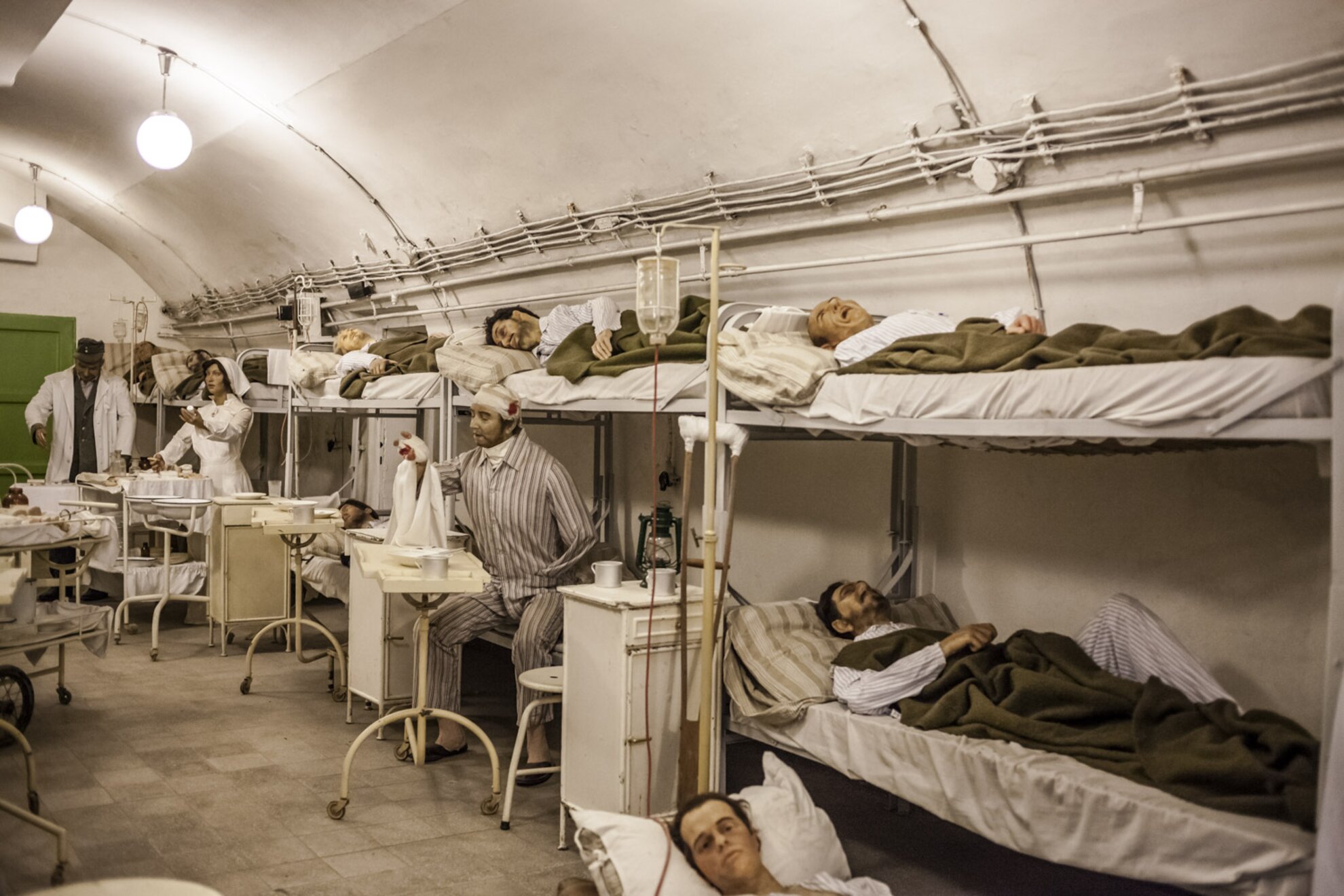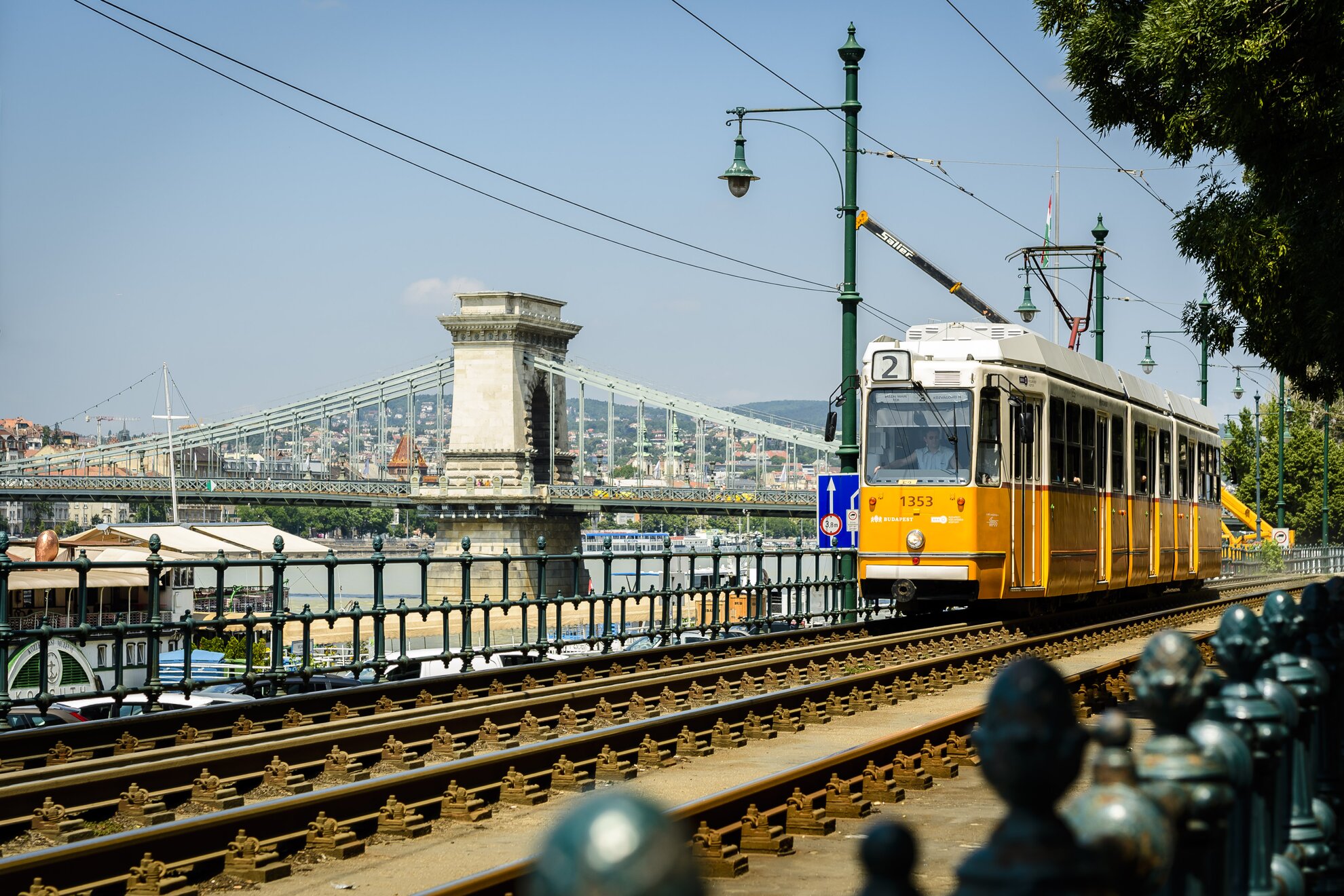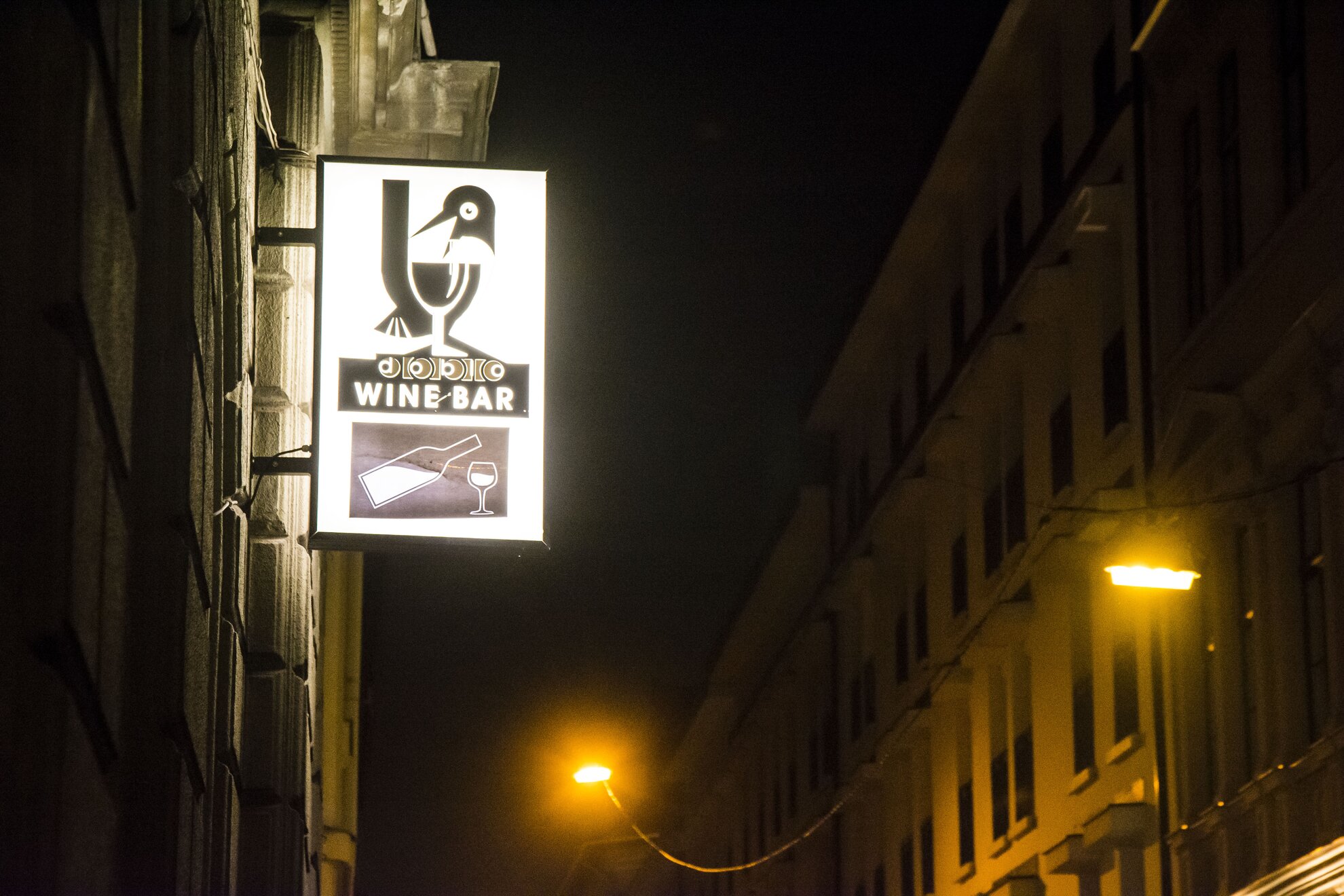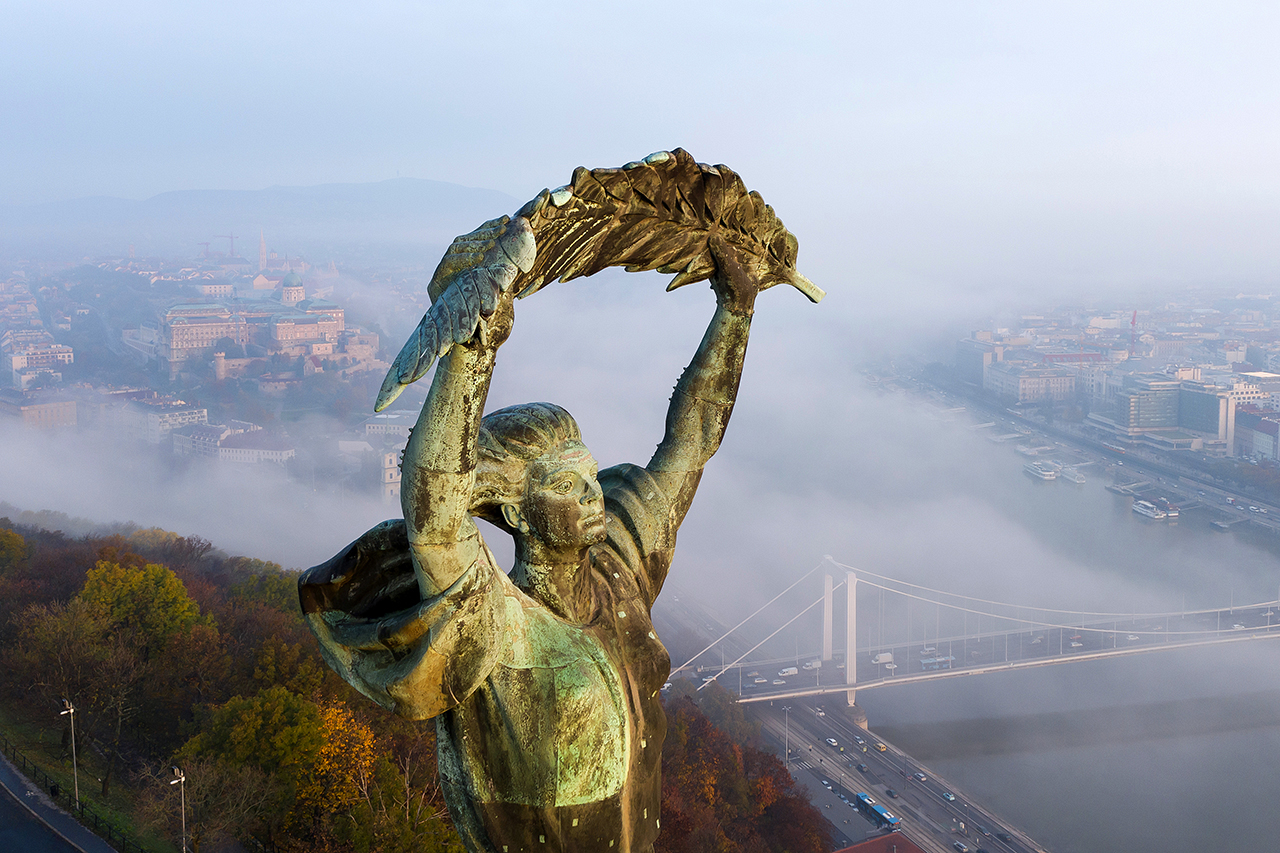Once you reach Budapest from the airport, you can start exploring the city. At present, proof of vaccination is not required to sit inside a bar or restaurant and order away, but masks are recommended on public transport and in enclosed spaces.

After a hearty breakfast of Hungarian sausage specialities at one of the city’s best early-morning hangouts, your tour can start at Clark Ádám tér, a roundabout on the Buda side of the Danube. It takes its name from the Scots engineer who completed the Chain Bridge alongside. Currently undergoing major renovation, sadly his iconic landmark is closed – Elizabeth Bridge is reasonably close – but it might be handy to know that this was the first crossing over the Danube here, ushering in the unification of Buda and Pest as one city in 1873.
It's also the setting off point for the vintage funicular up to the Castle District. After a
quick glide up the hill (don't forget to take in the view!), you alight by the Sándor Palace – the official residence of Hungary’s president – where the Changing of the Guards usually takes place on the hour.

Follow the cobblestoned lanes up here to visit major Buda Castle landmarks, including Fishermen’s Bastion offering panoramic views over the Danube and Pest cityscape. This photogenic attraction is dwarfed by Matthias Church, a Gothic-style shrine that staged the last Habsburg coronation just over a century ago. Climbing the 197 steps of its lace-like southern tower, you can take in another city panorama from the gingerbread roof, covered in the distinctive tiling of the famed Zsolnay factory in Pécs.

Nearby, revered family-run Ruszwurm cake shop serves Hungarian krémes custard cake and slices of caramel-topped Dobos torte, temptingly displayed behind the intricately carved wooden counter. A three-minute walk from here, the Hospital in the Rock Museum reveals war-time history and scenes from Hungary’s 1956 Revolution.
To admire Hungarian art, head back over to the Royal Palace, housing the Hungarian National Gallery. The museum’s chronological display presents Hungarian works from medieval Gothic to modern.

The main sights seen, you can head across the river to the city centre in Pest. Take the public lift down to the embankment, walk along the Danube past the ornate Várkert Bazár and you soon come to the elegant white Elizabeth Bridge. Jump on a frequent 7 bus from the Buda side and you arrive at Ferenciek tere.

A short walk along the Pest embankment back towards Chain Bridge – or take the scenic 2 tram one stop to Vigadó tér – brings you to deluxe hotels, panoramic eateries and the Pesti Vigadó, an elaborate edifice for cultural events and shows. Here, Franz Liszt played in 1869.

Several tour boats set sail from in front of the building, at Vigadó tér dock. A classic cruise runs between Margaret Bridge and Rákóczi Bridge, swinging past landmarks such as Parliament and Buda Castle. Look up and you’ll see the Liberation Monument at Citadella, a Habsburg-era fortress atop Gellért Hill. Meanwhile, BKK public ferries provide a convenient cruising alternative to tour boats for those on a budget.

Further down the riverfront, Széchenyi István tér is crowned by the Art Nouveau Four Seasons Hotel Gresham Palace. The ornate edifice was built in 1906 and reconfigured a century later with bright Zsolnay tiles, mosaic décor and colourful stained-glass windows. Alongside by the reception area, stunning cocktail bar Múzsa opened in late 2020 and offers inventive drinks mixed by a London-trained barman from 5pm, Thursdays through Sundays.

Heading inland, you soon see the vast shape of St Stephen’s Basilica, showcasing celestial stained-glass windows and the nation’s most revered religious relic, the embalmed holy right hand of Hungary’s founding king Szent István. To admire downtown Budapest from above, a spiral staircase or an elevator can take you up to the circular balcony that encompasses the building’s dome.

Below, prominent Michelin-praised restaurants lie within walking distance, serving modern Hungarian cuisine and fine Magyar wines. Borkonyha offers artistically crafted meals from a seasonally changing menu. Meanwhile, MÁK Bistro entices epicureans with multiple-course lunch specials that include reimagined regional meals.
Nearby, recently relandscaped Vörösmarty tér contains the historic Gerbeaud Café and, during the festive season, Budapest’s biggest Christmas fair. You're now in the retail hub of town. Following fashion-forward Deák Ferenc utca, you enter the city's bustling bar quarter, set behind the Great Synagogue nearby.

For the best choice of affordable dining and drinking destinations, head further into District VII, the city’s historic Jewish Quarter. Pop into Doblo for fine Hungarian wine and tapas-style treats. Nearby Spinoza offers quality Jewish specialities and regular live klezmer music. Opposite, Gozsdu Udvar is a long courtyard lined with bars and restaurants.

Budapest’s ruin-bar scene is also centred in District VII. Pioneer in dilapidated bar culture, Szimpla Kert comprises a maze of rooms in a former residential building, decorated with random knickknacks, while the entertainment complex has recently been completed with its own craft-beer lab.
Having merged to create one monumental party zone, Fogas Ház-Instant now welcome revellers to its spacious locale in a signature surreal setting. Tucked down Kazinczy utca is an idiosyncratic but ideal spot for a nightcap. Félix Hélix, Irish-run and as friendly as it gets.




